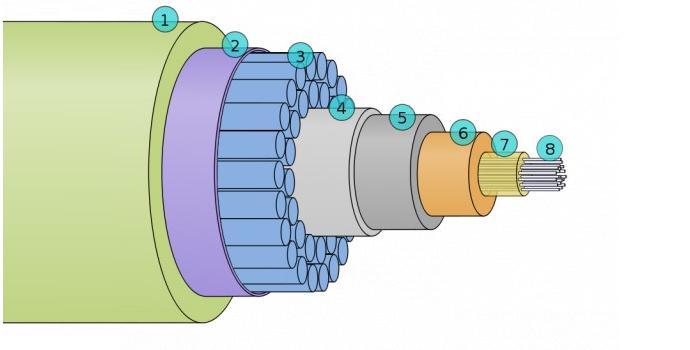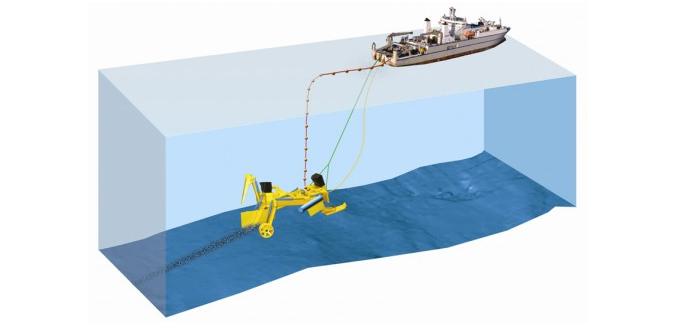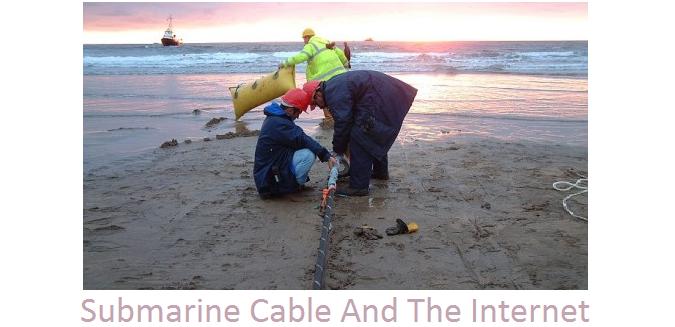Submarine Cable And The Internet
 Previously, almost all communication was done via intercontinental satellite: telephone calls to TV signals, almost everything was received and sent through them. At the beginning of the Internet, satellite links were also very common, but the high cost, very high latency and low bandwidth eventually causing the satellite to lose the race for the fiber links. Today, satellites are used as links as backup and remote access option for remote areas, but more than 99% of traffic goes through intercontinental fiber links, which today involve 6 of the 7 continents, leaving out only Antarctica.
Previously, almost all communication was done via intercontinental satellite: telephone calls to TV signals, almost everything was received and sent through them. At the beginning of the Internet, satellite links were also very common, but the high cost, very high latency and low bandwidth eventually causing the satellite to lose the race for the fiber links. Today, satellites are used as links as backup and remote access option for remote areas, but more than 99% of traffic goes through intercontinental fiber links, which today involve 6 of the 7 continents, leaving out only Antarctica.
Transatlantic communication cables are not a new thing. In fact, in the late 19th century there was already a large mesh of telegraph cables linking Europe, USA, Africa, Asia and Oceania, most of them comes under the British Empire. At that time, copper wires were used and there were no repeaters, so that it was necessary to use a very high voltage on one side to obtain a weak and noisy signal of another. Throughout the 20th century several new cables were installed in order to meet the telephone companies, but it was only in recent decades that the transatlantic links gave a big leap, going to meet the Internet.
Although relatively thin (about 7 inches thick) submarine cables are built to be quite resilient. Beneath a thick layer of polystyrene (1) have a layer of mylar (2), multiple steel cables, designed to make the cable mechanically resistant (3), layers of aluminum and polycarbonate, which guarantee protection against water ( 4, 5), a copper tube (6) a gel layer (7) and finally the bundle of fiber, which are really important:

Besides the use of high quality fiber, the links include solid state optical repeaters, integrated to the cables at intervals of about 100 km. They relay the degraded signal, allowing links to be extended for thousands of miles. These repeaters are powered by energy that is transmitted through the cable itself, making ground stations are really necessary only at the points where you need to perform packet routing or integrating multiple links.
These cables are installed on the ocean floor at a cost of several billion dollars with a specialized vessels. The work is done in two stages, with the ship moving slowly and dumping the cable on the seabed and connected to an robotic installer digging a shallow grave on the ocean floor and burying the cable at the same speed. For signal degradation, the cable needs to be installed perfectly straight, which demands a particularly precise navigation.

Currently, it is possible to transmit 40 gigabits per fiber strand and each cable is composed of a large number of wire, taking the total capacity to transmit terabits of the house, according to the cable capacity and specific percentage of dark fiber ( fiber links that are not being used):

Submarine cables are complemented by the cables installed on land, which are usually installed along the roads or power transmission lines or gas, creating a fiber mesh that spans all major cities. Other modes of access such as ADSL, Cable, 3G etc.. these links are connected to fiber, enabling subscribers to gain access to large network.
Within the cables, the signal travels almost at the speed of light and even with the delay introduced by repeaters and routers along the way, you can get very good latency. Nowadays, you can get pings between Nasik Data Centers and London below 250 ms, which would be unthinkable in the early days.
Still, new cables are continually being installed, in order to increase capacity or reduce latency. A recent example is the new stretch linking the UK to Japan, passing through the Arctic Ocean north of Canada, at a total cost of more than $ 3 billion (for the installation of three cables, along with the control stations routers, etc..) in an effort to reduce the latency of transmissions between the UK and Asia.
- How Cloud Computing Is Changing The Labor Market - March 25, 2015
- Adopting Infrastructure as a Service Can be a Good Deal - March 17, 2015
- Will Virtualize? Take These Six Points Into Consideration - March 12, 2015
